The top 10 typhoons in the Philippines include super typhoons like Haiyan (Yolanda), Bopha (Pablo), and Mangkhut (Ompong), known for their devastating impacts on lives, agriculture, and infrastructure across various regions.
ADVERTISEMENT

Table of Contents
Top 10 typhoons in Philippines
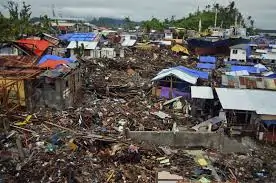
Typhoon Haiyan (Yolanda) (2013)
Typhoon Haiyan, locally known as Yolanda, was one of the strongest and deadliest tropical cyclones ever recorded. It made landfall in the Philippines on November 8, 2013, primarily affecting the Visayas region, particularly Leyte and Samar. Haiyan brought with it extreme winds reaching speeds of 315 km/h (195 mph), massive storm surges, and heavy rainfall, leading to widespread devastation.
The city of Tacloban in Leyte was one of the hardest-hit areas, with much of the city destroyed by storm surges that reached over 20 feet high. The aftermath of Typhoon Haiyan resulted in catastrophic damage, with over 6,000 deaths officially reported, tens of thousands injured, and millions displaced from their homes.

Typhoon Goni (Rolly) (2020):
Typhoon Goni, known locally as Rolly, was a powerful super typhoon that struck the Philippines in November 2020. It was classified as one of the strongest landfalling tropical cyclones in world history, with sustained winds reaching 315 km/h (195 mph). Goni made landfall in the Bicol region, severely impacting the provinces of Catanduanes and Albay.
Goni’s extreme winds and torrential rain led to widespread devastation, including massive flooding, landslides, and the destruction of homes and infrastructure. The storm surge in coastal areas worsened the damage, displacing 425,000 people. In some areas, entire communities were flattened, and the agricultural sector faced significant losses. Over 25 lives were lost, though the number was relatively low compared to the severity of the storm, thanks in part to effective early warning systems and evacuations.
The province of Catanduanes was hit the hardest, with over 90% of structures damaged or destroyed. Albay also faced significant impacts, including landslides from Mount Mayon, adding to the destruction.
The response to Typhoon Goni included massive relief efforts from both the government and international agencies, as the affected areas struggled to recover from the devastation. The economic impact of the typhoon was estimated to be in the billions, primarily affecting infrastructure, housing, and agriculture.
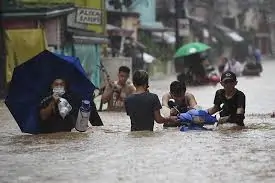
Typhoon Vamco (Ulysses) (2020):
Typhoon Vamco, locally known as Ulysses, was a destructive tropical cyclone that struck the Philippines in November 2020, closely following the devastation caused by Typhoon Goni. It made landfall in Quezon Province before affecting several other parts of Luzon, including Metro Manila, Rizal, and Cagayan Valley. Although classified as a less intense typhoon compared to Goni, Vamco brought heavy rains and caused widespread flooding, evoking comparisons to the deadly 2009 Typhoon Ketsana (Ondoy).
Vamco caused severe flooding in Marikina, Rizal, and parts of Metro Manila, submerging communities and leaving thousands stranded on rooftops. In Cagayan Valley, the situation worsened as the Magat Dam released excess water, causing rivers to overflow and flooding vast areas, affecting more than 1 million people. Landslides, power outages, and communication disruptions exacerbated the situation, and over 100,000 homes were damaged or destroyed.
Vamco claimed over 100 lives and displaced 500,000 people, making it one of the most significant weather disasters in 2020. The typhoon also caused extensive damage to agriculture and infrastructure, with the economic impact reaching billions of pesos. Relief efforts were quickly mobilized, with both government and international agencies providing aid to the affected areas.
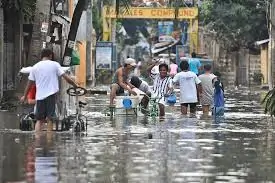
Typhoon Ketsana (Ondoy) (2009):
Typhoon Ketsana, locally known as Ondoy, struck the Philippines in September 2009, bringing an unprecedented amount of rainfall that led to widespread flooding, particularly in Metro Manila and nearby provinces. Ketsana made landfall in the Luzon region and unleashed a month’s worth of rainfall in just six hours, resulting in catastrophic flash floods. This deluge submerged entire communities, with floodwaters reaching rooftops in many areas.
The heavy rainfall caused Marikina River and other waterways to overflow, inundating large parts of Metro Manila, including Marikina, Pasig, Quezon City, and Manila. Roads became rivers, trapping people in their homes and vehicles, while rescue operations struggled to keep up with the sheer volume of those in need. Nearly 500,000 people were displaced, and around 4.9 million people were affected by the flooding.
Typhoon Ketsana left 464 people dead, thousands injured, and significant economic losses, with the damage to infrastructure, homes, and agriculture estimated at P11 billion (around $230 million). In its aftermath, Ondoy became a turning point for the Philippines, pushing the government to improve its flood management systems and emergency response strategies.

Typhoon Trami (Kristine) (2024):
Typhoon Kristine (internationally known as Trami) has caused significant damage across the Philippines, with severe impacts particularly in Luzon. The storm, one of several strong systems to hit the country this year, led to intense flooding, landslides, and infrastructure damage, especially in the Bicol region and parts of Quezon. Tragically, 24 fatalities have been reported, primarily from drowning and landslides, and affected areas also include Manila, which saw severe flooding. Vital infrastructure like roads, bridges, and power lines have been disrupted, and relief efforts are ongoing as government agencies and local groups provide assistance to displaced families and those in need.
Japan has expressed readiness to assist in the aftermath, extending support to help the Philippines recover from the typhoon’s widespread destruction. Additional fatalities and damage are still being assessed as officials work to reach isolated areas where communication has been challenging..
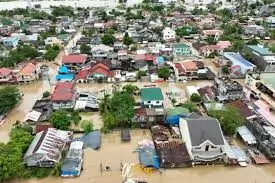
Typhoon Bopha (Pablo) (2012):
Typhoon Bopha, locally known as Pablo, was a devastating storm that struck the Philippines in December 2012. As a Category 5 super typhoon, it was one of the strongest cyclones to hit the southern region of Mindanao, an area typically less affected by typhoons. Bopha brought sustained winds of 175 mph (280 km/h) and caused severe destruction through floods, landslides, and widespread infrastructure damage. The storm left more than 1,000 people dead, thousands displaced, and significant economic losses, especially in agriculture. Bopha’s impact spurred extensive humanitarian responses, both domestically and internationally, with recovery efforts continuing well into the following year. The typhoon highlighted the vulnerability of southern Philippines to severe weather, emphasizing the need for disaster preparedness even in regions historically spared from such storms.
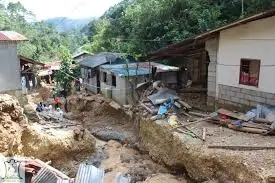
Typhoon Mangkhut (Ompong) (2018):
Typhoon Mangkhut, known locally as Ompong, was a powerful and destructive Category 5 typhoon that hit the Philippines in September 2018. Mangkhut brought sustained winds of up to 165 mph (270 km/h) and gusts reaching 200 mph (325 km/h), making it one of the strongest typhoons to impact the region that year. The typhoon primarily affected northern Luzon, particularly the Cagayan Valley and Cordillera regions, with intense winds, storm surges, and severe flooding.
Mangkhut caused widespread destruction, particularly in agricultural areas, damaging thousands of hectares of crops and affecting the livelihoods of many communities. Landslides triggered by the heavy rains were especially deadly, with the town of Itogon in Benguet suffering a landslide that claimed numerous lives. The disaster left over 100 people dead, displaced thousands, and caused extensive economic damage, estimated in the billions of pesos.
The aftermath of Mangkhut led to large-scale relief efforts from both the government and international organizations, emphasizing the importance of emergency preparedness in the face of powerful tropical storms in the region.
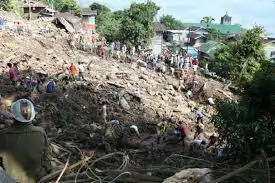
Typhoon Parma (Pepeng) (2009):
Typhoon Parma, locally known as Pepeng, was a powerful storm that struck the Philippines in October 2009. Initially classified as a Category 4 typhoon, Parma made multiple landfalls across Luzon, causing widespread destruction over a prolonged period due to its slow-moving nature. The typhoon brought heavy rains, which resulted in catastrophic flooding and landslides, particularly in the Cordillera and Ilocos regions.
Parma compounded the devastation caused by the earlier Typhoon Ketsana (Ondoy), which had hit just a week prior. Parma’s lingering rains led to severe flooding that displaced thousands of residents, caused significant agricultural losses, and resulted in over 400 fatalities. The combined economic impact of Typhoons Parma and Ketsana was extensive, with damages in infrastructure and agriculture reaching billions of pesos.
The aftermath of Typhoon Parma highlighted the Philippines’ vulnerability to prolonged weather events and underscored the need for improved disaster response and infrastructure resilience.
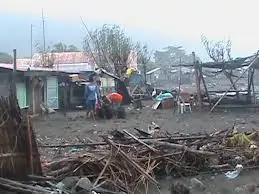
Typhoon Megi (Juan) (2010):
Typhoon Megi, known locally as Juan, was an intense Category 5 super typhoon that struck the Philippines in October 2010. Megi was one of the strongest typhoons to make landfall in the country at that time, bringing sustained winds of 145 mph (230 km/h) and gusts exceeding 195 mph (315 km/h). The typhoon made its initial landfall in northern Luzon, where it caused widespread damage through violent winds, heavy rainfall, and storm surges.
The Cagayan Valley and Isabela provinces were particularly affected, with extensive agricultural losses, damaged homes, and significant infrastructure destruction. Flooding and landslides led to displacement and affected over a million people. Despite the intense winds and destruction, the Philippines managed to keep the death toll relatively low, with early evacuations helping to save lives. However, the economic impact was substantial, with damages to crops (especially rice and corn) and infrastructure amounting to billions of pesos.
The aftermath of Typhoon Megi highlighted the importance of early warning systems and disaster preparedness, setting a precedent for future responses to powerful storms in the region.
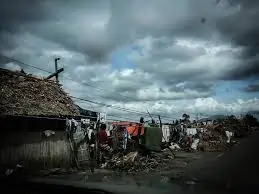
Typhoon Melor (Nona) (2015):
Typhoon Melor, known locally as Nona, was a powerful Category 4 typhoon that impacted the Philippines in December 2015. Melor brought sustained winds of up to 130 mph (215 km/h) and gusts reaching 160 mph (260 km/h), causing significant damage across central Luzon, Bicol, and parts of Eastern Visayas. The typhoon’s strong winds, heavy rains, and storm surges led to widespread flooding and landslides, which devastated homes, infrastructure, and agricultural land.
Among the hardest-hit areas were the provinces of Sorsogon, Northern Samar, and Oriental Mindoro, where extensive damage to crops (especially rice and coconut) and infrastructure left thousands displaced and without power for weeks. The storm resulted in around 42 fatalities and caused economic losses estimated at over PHP 6 billion.
In the aftermath, the Philippine government, alongside local and international organizations, provided relief and recovery support to affected communities. Typhoon Melor highlighted the ongoing need for robust disaster preparedness measures, particularly in areas frequently impacted by severe tropical cyclones.
Conclusion
The Philippines, being situated in the Pacific typhoon belt, experiences some of the most powerful and destructive typhoons in the world. Notable storms like Typhoon Haiyan (Yolanda), Goni (Rolly), and Ketsana (Ondoy) have left lasting impacts on the nation, leading to loss of lives, widespread destruction, and economic setbacks. These typhoons serve as stark reminders of the country’s vulnerability to extreme weather events, underscoring the importance of disaster preparedness, early warning systems, and climate resilience efforts to mitigate future impacts. Awareness and proactive measures can help minimize the risks associated with these natural disasters.
Disclaimer
The information provided on the top typhoons in the Philippines is intended for general knowledge and awareness purposes only. While efforts have been made to ensure the accuracy of the data, weather patterns and statistics may vary over time due to new reports or updated information. It is recommended to consult official sources, such as government weather agencies or disaster response authorities, for the most current and reliable updates on typhoons and other weather-related events. This content does not replace professional advice for disaster preparedness or response. Always prioritize safety and follow local advisories during extreme weather conditions.
About Authors
Kween Yulo is a seasoned SEO writer with 15 years of experience, specializing in diverse niches across the digital landscape. Her expertise spans various industries, including gaming, e-commerce, finance, travel, and lifestyle. Known for crafting engaging, optimized content, Kween’s writing is tailored to boost search rankings and enhance user engagement. Her deep understanding of SEO trends, keyword strategies, and audience behavior has made her a trusted content creator for businesses seeking to strengthen their online presence. Kween’s versatility and dedication to quality make her an asset in any digital content strategy.


